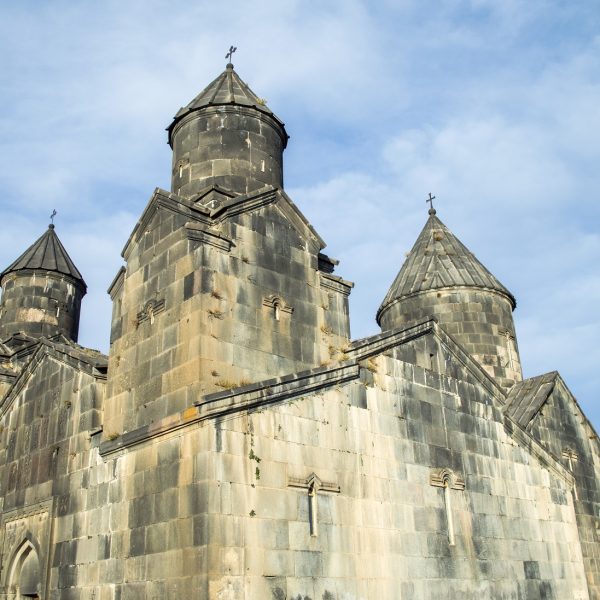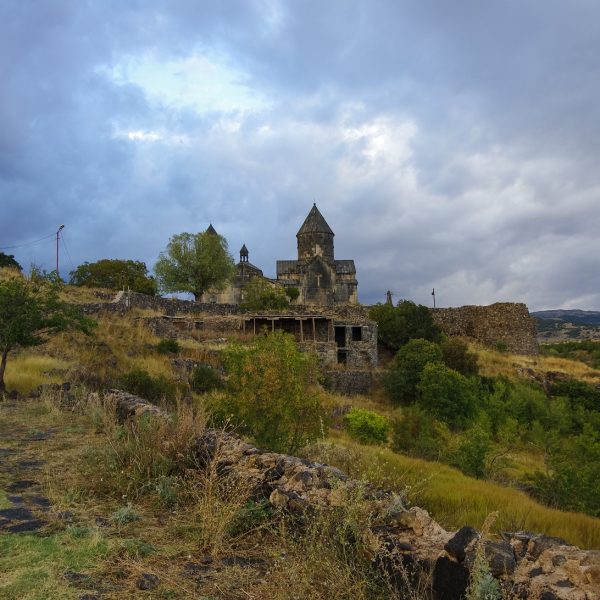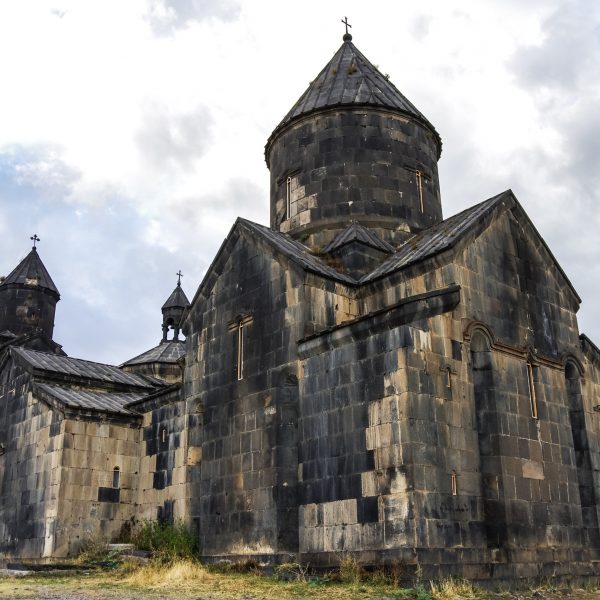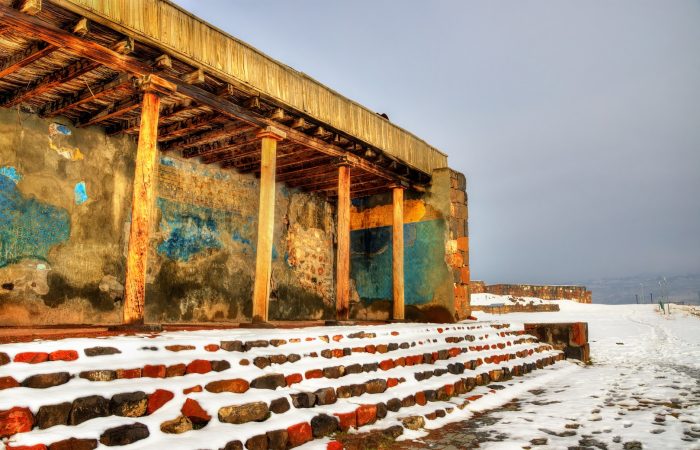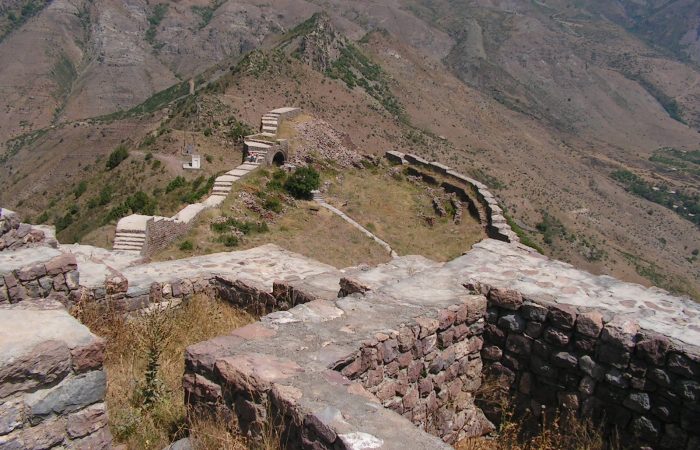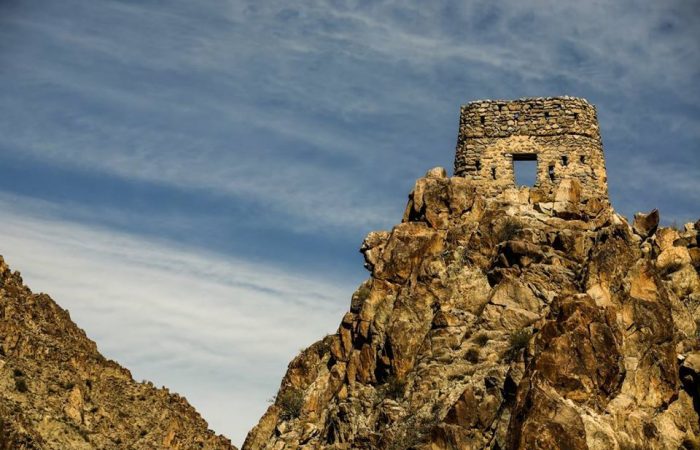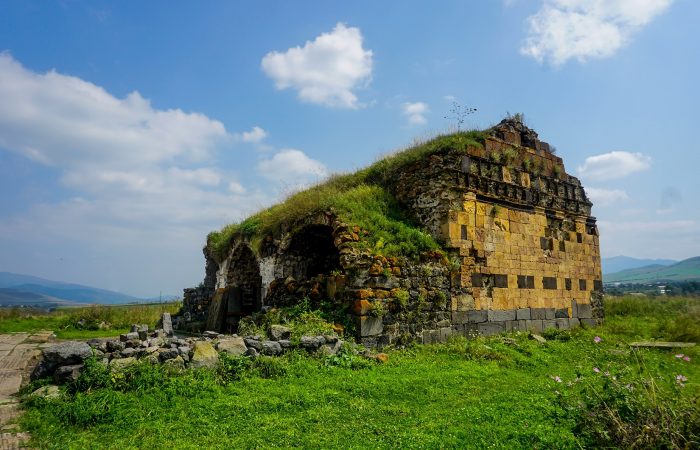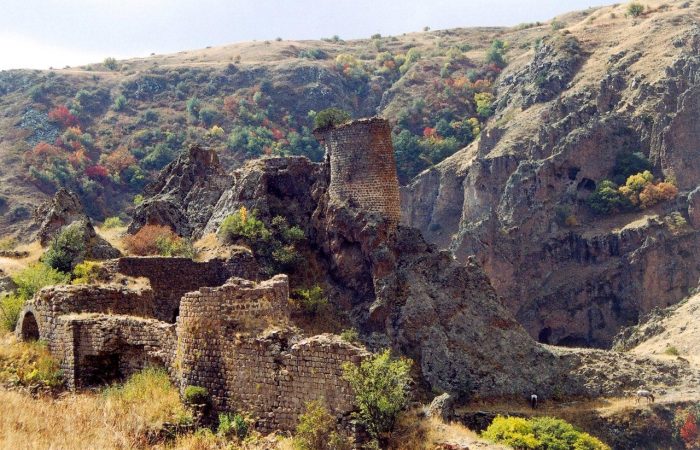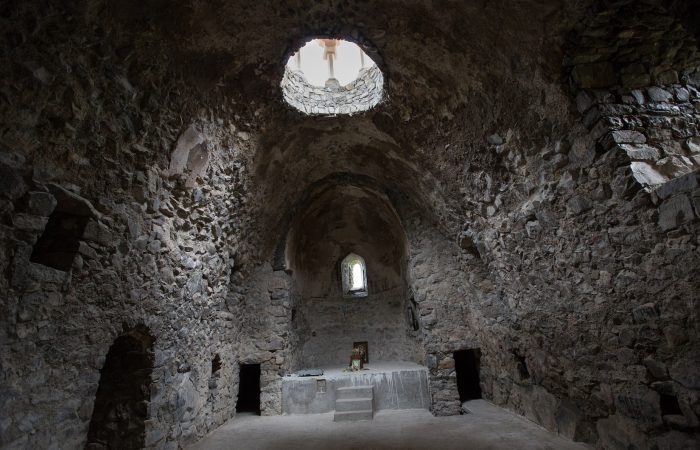Tegher Monastery: Peculiarities
Tegher proves to be different from the rest of Armenian traditional churches. Spiritual centers have always been of utmost importance to Armenians. This is the reason why historians and writers considered it one of the most important tasks to write down information about different churches, their builders, and the course of their development. As it has already been mentioned, Tegher missed this point.
Another peculiarity of Armenian churches is the reddish tuff stone, which is the main construction in this country material even now. Tegher Monastery is different in this regard as well. The monastery is built of black basalt, which in some cases used to serve as a base material.
Tegher Monastery: Architecture
The architect of these churches was Vardapet Aghbayrik. Although Tegher is not the most famous work of his, he had also taken up the construction of Saghmosavank and Hovhannavank.
It’s not only the black color that sets this church apart from the others and gives it a stricter appearance. Unlike other churches, which people decorated with more enthusiasm than their own homes, Tegher lacks any kind of decoration, including pictures, range of inscriptions, and masonry. On the other hand, it is necessary to do justice to the interior and mention that there are a few carved images of crosses inside the main church.
Perhaps, this was the main reason why historians and writers avoided giving thorough review of this church.
These differences make the church look even more impressive, as the black building looks striking after the continuous reddish churches spread all over Armenia.
One of the architectural peculiarities of Tegher is the two-storey mausoleums that occupy the gavit.
There is another possible reason for Tegher’s lack of fame, and it’s connected to the name. The village Tegher was once called Degher (meaning “medicine”). The village acquired the name because of the medical herbs that used to grow around here. These herbs were many times used to cure Armenian soldiers.
Therefore, Tegher Monastery could have been a house for people who needed faith and help, which is why additional adornment was not taken account of.
As there is not much artwork displayed in and outside the church, the time of visit should be chosen even more carefully. The best seasons are spring and fall. The nature just starts reviving from temporary death, the green that covers the nearby hills forms a beautiful contrast with the black color of the monastery.
Tegher Monastery: Excavations
There is an area that will interest current and future archeologists. The area includes discoveries, which are made through excavations and belong to the Bronze and early Iron Ages of Armenia.
The area is called Old Tegher and represents the ancient village around the monastery, dating back to the 9th century. One of the most interesting findings is the Tukh Manuk chapel that belongs to the 5th century.
Tegher Monastery: Khatchkars
There are a number of khatchkars (cross-stones) around the churches. These works typical only of Armenia can be found in all churches of this country, even in those that are known for no decorations.
These cross-stones were made in the memory of donors of the monastery. This used to be a very common practice in the Armenian history. The wealthy would build churches and order cross-stones, hoping for a comparatively gentler attitude on the Judgment Day.
Just like the monastery, the majority of cross-stones are also of black color.
Tegher Monastery is less known among other must-see sacred sites, it does not offer golden cups and paintings, books decorated with precious stones or anything else that is nice and shiny, but it certainly is more than impressive with its simplicity and strict spiritual atmosphere.

